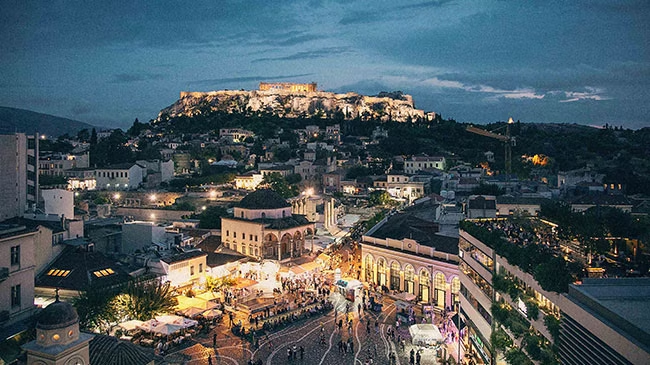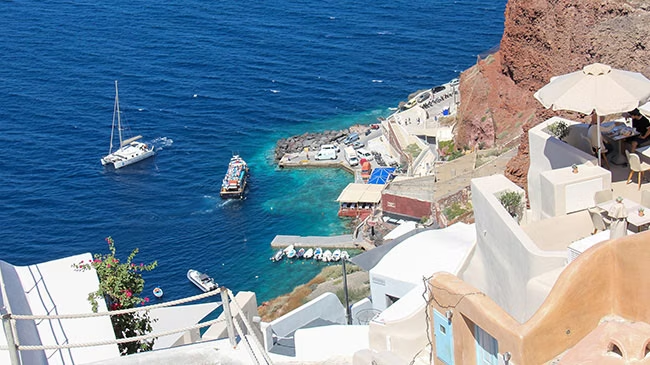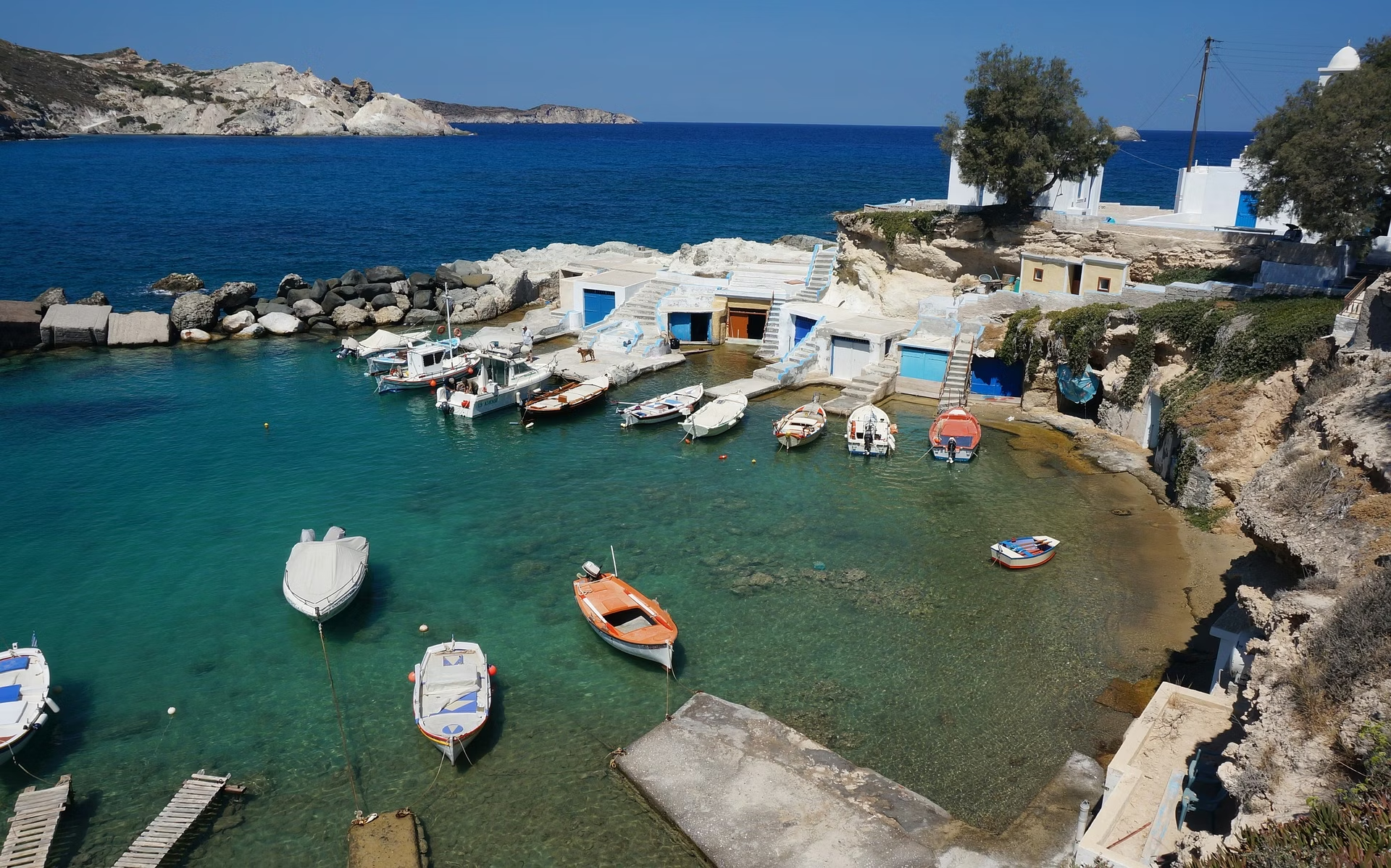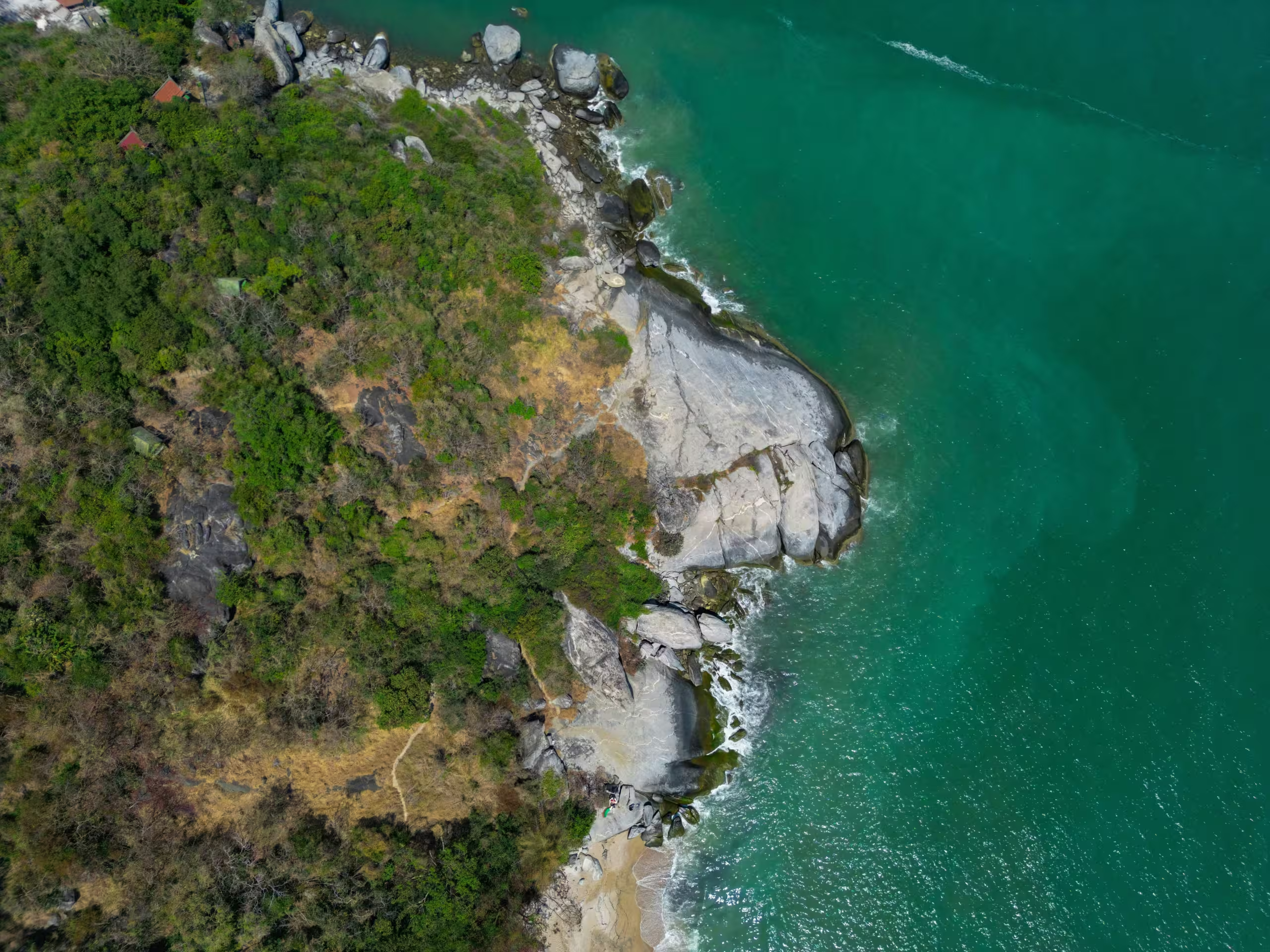This website uses cookies so that we can provide you with the best user experience possible. Cookie information is stored in your browser and performs functions such as recognising you when you return to our website and helping our team to understand which sections of the website you find most interesting and useful.
Highlights
- Discover Athens boasting many modern and ancient monuments like the Temple of Zeus, the Old Stadium, Syntagma Square, the Parliament and the Tomb to the Unknown Soldier, the Academy, the Library, and the National Gardens
- Sample some local specialties of Athens during your gastronomy walking tour such as Greek Souvlaki & Greek doughnuts with honey & syrup, traditional spinach pie!
- Visit the Archaeological Museum of Olympia is a must! It has some of the most important works of Classical art such as the sculpted decoration od the temple of Zeus, the statue of Nike and the famous statue of Hermes carved by Praxiteles
- Don’t miss the beach with the famous shipwreck that has become the trademark of Zakynthos! The rusty body of the abandoned ship in the middle of a fine white sand beach belonged to an outlaw cargo packed with illegal cigarettes
- Discover Zakynthos, also known as Zante, an island of great exotic beauty, with white fine sand beaches, endless green forests, cliffs and isles which has a lot to offer!
- Explore the stunning island of Mykonos that has 45 different sandy beaches with crystal clear blue waters to be discovered!
Duration
3 days
Min Age
3+
Pickup
Airport
Enjoy a full-day tour of Athens and unveil the majestic ruins of the old Acropolis. Then, proceed to Milos where you will be fascinated by the white rock formation unique to Sarakiniko and by the beauty of this island.
Finally, reach Santorini Island and experience a semi-private sunset cruise ride up to 14 pax while admiring the splendid beaches around Santorini.
Included/Excluded
- Private transfers in Athens, Milos & Santorini Island
- Full-Day Private Tour of Athens including the Acropolis & the Acropolis Museum followed by Walking Food Tour
- Private Bus Tour of Milos Island (6 hrs) with food tasting
- Daily Breakfast at the Hotel
- Semi-Private Catamaran Sunset Cruise in Santorini Island (5hrs) with dinner included
- Domestic airfares and taxes, unless otherwise specified in our holiday package Visa expenses, processing and issuance fees
Tour Plan
Welcome to Athens the birthplace of Western Civilization, the Capital of Greece!
Upon arrival at Athens International Airport meet with your English-speaking escort and transfer to your hotel.
Rest of the day at leisure.

After breakfast, enjoy a 6-hour Private Bus Tour of Milos Island.
The trip begins from Papafragas, a cluster of deep‐sea inlets and sea caves. It is located at the base of a pristine ravine that was shaped by volcanic activity. Wonder for a while at this picturesque location, where you can look down into clear turquoise waters and watch some rather adventurous tourists swim and snorkel in the caves at the bottom of the ravine. Milos played a crucial part in the pre‐history of the Cyclades and specifically Phylakopi, a settlement dating back to the Neolithic Period (9000 to 4000 BC approx.). While excavating the site in the late 1890s, British archaeologists discovered tools made out of obsidian, a volcanic glass similar to granite and the nicely decorated clay figurine of the “Lady of Phylakopi”. Introducing this prehistoric position which remained an active settlement until 1000 BC from the adjacent site of Papafragas overlooking the city’s western fortification wall.
A short drive from Phylakopi takes you to Sarakiniko, an inlet of pure white rock formations sculpted by volcanic eruptions. The beautiful, otherworldly spot is one of the island’s many geological wonders and perhaps one of the most photographed places in the Cyclades. Take a walk down the inlet so you can experience this one‐of‐a-kind beach and take photos. Here, you’ll feel as if you’ve landed on the moon. From there we will travel the road along the northern coast towards picturesque Plaka and its cobbled streets and alleys. Plaka is a classic Cycladic “Chora” with white stone houses and bougainvillea flowers, at 250m, above the level of the sea. Walk through the village to admire its traditional architecture and its stunning view of the sea from the veranda of Panagia Korfiatissa church, and you'll taste some homemade sweets at the village’s famous local pastry shop.
Next stop, in the outskirts of Trypiti, lay the Catacombs, a sacred place for Early Christianity, a Necropolis and resting place of estimated 2500 souls. Close to the Catacombs is the marble Roman Amphitheater which you can only see from above because reconstruction works take place. There are still seven intact seat rows with a lovely view of the bay. Not far from this location, the site of discovery of Venus de Milo in 1820 (now residing in the Louvre in Paris).

After breakfast, the morning is at leisure to relax and discover what Santorini has to offer.
In the afternoon around 15.30hrs, transfer from your hotel to the port and depart for a Semi-Private Catamaran ride up to 14 pax. Your Sunset Cruise includes:
- Welcome drink
- Snorkeling gear
- Towels
- Dinner on board: Seafood, chicken fillet, salads, open bar with local white wine, beers, beverages, fruits (Vegetarian meal available upon request).
Set sail from the picturesque Marina of Vlychada and enjoy sailing along with the magnificent coastal scenery of Santorini. Your first photo shooting stop is at the Red Beach in Akrotiri, one of the most beautiful beaches of the island with the red rocks and the dark pebbles. Move on and reach the White Beach – accessible only by boat – and the Mesa Pigadia swimming spot and snorkel in the crystal-clear blue waters with the rich underwater environment and reefs.
Then sail past the Indian Rock, the Venetian Light House of Akrotiri. Pass by the Aspronisi Island and marvel at the glorious views of the Caldera and the cliff-hanging white houses. Sail around the must-see Volcano coast and stop at its’ hot springs, where you can treat yourself to a natural spa in the thermal mixed volcanic mud waters. One more stop follows up, this time to a secluded private bay and plunge in the majestic waters as our attentive crew prepares for you a delicious meal.
At the end of this unique sailing experience, you'll head back to the Marina of Vlychada.
Overnight stay in Santorini at the Cliff Side Suites.

Tour Map
- 2024-2025 @ Incloud World s.r.o.












